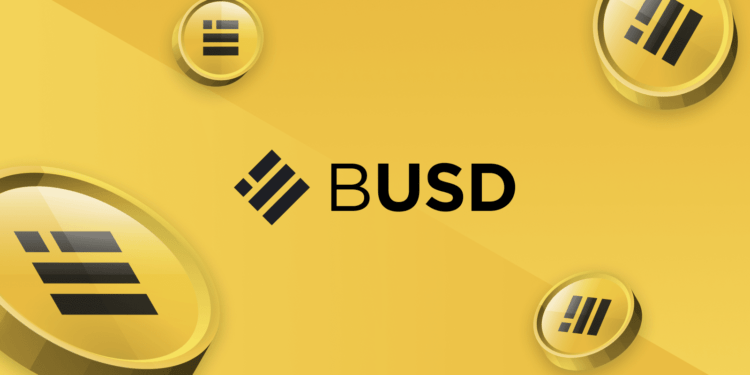- What is BUSD?
- How does BUSD work?
- How is BUSD regulated?
- What are the use cases of BUSD?
- 1. Avoid price swings in the cryptocurrency market
- 2. Lock in profits without converting to fiat currency
- 3. Offers arbitrage opportunities to traders
- How does BUSD differ from other Stablecoins?
- Conclusion
- FAQs
BUSD is a cryptocurrency that you have probably previously heard of if you have used Binance to buy or sell cryptocurrencies. The trading pair involving the token is one of Binance’s most popular offerings on its platform. In a nutshell, Bitcoin serves as a digital representation of the United States dollar and is fixed to the same value as the dollar.
It is not always clear, particularly to newbies, why traders and investors retain BUSD positions. However, the function of BUSD and other stablecoins is an important component of the whole ecosystem of cryptocurrencies. BUSD is a regulated stablecoin that is backed by fiat currency and is pegged to the value of the US dollar. One US dollar is kept in reserve for every unit of BUSD that is in circulation.
In other words, the supply of BUSD is linked exactly one-to-one with the value of the United States dollar. Token holders have the ability to exchange their tokens for fiat currency and vice versa. The token’s issuer, Paxos, publishes monthly attestations of BUSD’s reserves for public consumption. Since it is a stablecoin, the value of one BUSD is intended to remain constant throughout time.
What is BUSD?
Paxos and Binance have collaborated to create a stablecoin known as BUSD. Blockchain technology is utilized by Paxos in the provision of their stablecoin as a service product to third-party organizations. In the past, they developed a coin called PAX Gold, which was a gold-backed stablecoin (PAXG). Both BUSD and PAXG tokens are subject to the regulations of the New York State Department of Financial Services.
On a more fundamental level, BUSD operates as a fiat-backed stablecoin that is pegged to the value of the US dollar. Paxos maintains reserves in the form of an amount of United States dollars that is equivalent to the total supply of BUSD. These reserves are either maintained in FDIC-insured institutions in the United States or are guaranteed by the United States Treasury.

When there is a rise or decline in the price of the US dollar, there is a corresponding rise or fall in the price of BUSD. Accessibility, flexibility, and speed are three important aspects that are offered by BUSD in relation to transactions. Paxos and Binance both provide straightforward access to purchasing the token. Buyers can pay a quantity in United States dollars to Paxos.
It will then create new BUSD tokens on their behalf, or they can acquire them using Binance’s crypto exchange or fiat gateway services. BUSD is a flexible cryptocurrency that enables users to instantly convert their holdings into stable assets without leaving the blockchain network. This offers users the additional benefit of flexibility. The ultimate benefit of buying BUSD is that it enables users to send money anywhere in the world fast and at little cost.
Paxos utilizes the Ethereum network to issue BUSD tokens. In addition to this, Binance provides a Binance-Peg BUSD token that may be traded on the BNB Chain. Binance creates Binance-Peg BUSD (BEP-20) by minting Binance-Peg BUSD tokens, each of which correlates to a BUSD token that is kept in reserve by Binance. Binance stores BUSD in an Ethereum blockchain address.
To accommodate their various requirements, holders of BUSD (ERC-20) and Binance-Peg BUSD (BEP-20) have the ability to move their tokens back and forth between the two blockchains. This can be accomplished on the Binance exchange (during withdrawals) or via Binance Bridge. Remember that Binance-Peg BUSD is a product that was developed by Binance; it is not issued by Paxos and it is not regulated by the New York State Department of Financial Services.
How does BUSD work?
When compared to the mechanisms that underpin other stablecoins, the one that governs BUSD’s peg is unusually straightforward. One BUSD can be traded in for one USD at any time using the reserves. When you transmit your BUSD to Paxos, it will burn your tokens and then provide you with the corresponding amount of the fiat currency. This method guarantees that the ratio of reserves to supply remains unchanged at 1:1.
Arbitrager traders will make significant purchases of BUSD whenever the price of BUSD begins to move below $1 for 1 BUSD. These traders are looking to make a profit. Even if they sold it for $0.98, there was still a possibility that they would earn a profit. After making substantial purchases of BUSD, arbitragers can use the Paxos network to convert their BUSD tokens into fiat currency so that they can cash out their profits. When there is a rise in demand for BUSD, the price of each token will automatically rise until it reaches $1, so reestablishing the 1:1 peg.
How is BUSD regulated?
Paxos, Binance, and the requirements for how a stablecoin should function have been subject to specific regulations imposed by the state regulators of New York. Paxos is responsible for ensuring that the token is fully collateralized, as well as controlling the generation of new BUSD tokens and the destruction of old ones. Paxos also reserves the right, in the event that it is necessary due to illegal behavior, to freeze accounts and remove funds.

All of these criteria are in accordance with the Trust Charter and the New York banking laws that are relevant to the stablecoin. In addition, SetLawEnforcementRole is a newly developed function that was incorporated into the smart contracts of the token. This function was designed to reflect the regulation of the stablecoin. Paxos is granted permission to enforce New York Department of Financial Services (NYDFS) regulations through the exercise of the powers described above thanks to this short section of code.
These features are applicable to the Paxos-issued BUSD that runs on Ethereum, as was mentioned earlier. Binance-Peg BUSD is a cryptocurrency that is not issued by Paxos and is not regulated by the NYDFS. Binance-Peg BUSD is instead issued on BNB Chain, which was formerly known as Binance Chain and BNB Smart Chain.
What are the use cases of BUSD?
On the basis of the features mentioned above, BUSD and Binance-peg BUSD have a wide range of applications for crypto traders and investors. The following is a list of the major uses of BUSD:
1. Avoid price swings in the cryptocurrency market
The cryptocurrency ecosystem is prone to significant swings in price. In the cryptocurrency market, just as there is demand for stable assets in traditional financial institutions, there is also demand for stable assets, particularly at times when the market is too turbulent. Traditional investors are able to weather a period of volatility by turning their assets into fiat currency or securities. Both BUSD and Binance-Peg BUSD provide investors and traders in cryptocurrencies with the same possibility.
2. Lock in profits without converting to fiat currency
Whenever anyone wants to get out of a position and lock in their earnings, BUSD and Binance-Peg BUSD give a very liquid mechanism to accomplish this goal. There is now no need to keep waiting in order to transfer fiat cash from an exchange into your bank account. You don’t have to wait to add more fiat cash to your account if you want to open a new position or buy another asset.
3. Offers arbitrage opportunities to traders
BUSD and Binance-Peg BUSD are two of the most popular stablecoins on their respective networks and among BNB Chain automated market makers (AMM). When prices of several AMMs are different from one another, these liquidity pools could potentially provide opportunities for arbitrage. Arbitragers are given the ability to easily move between platforms and reap the benefits of the widespread acceptance of BUSD and Binance-Peg BUSD across a variety of platforms. There is also the potential for arbitrage possibilities to be gained by purchasing BUSD and then selling it for fiat currency.
How does BUSD differ from other Stablecoins?
BUSD stands out from other stablecoins on the market for a number of important features that set it apart. To begin, BUSD is classified as a type of stable cryptocurrency that is backed by fiat currency. There are also crypto-backed stablecoins, such as DAI, which employ digital currencies for their reserves. Additionally, there are algorithmic stablecoins that do not include any form of collateralization. These initiatives are utilizing algorithms to generate new tokens and destroy existing ones in an effort to exert control over the supply of the stablecoin.
But how is BUSD different from other stablecoins that are backed by fiat currency? One of the most important aspects is that Paxos publishes regular audits, which demonstrate that the company’s US dollar reserves are equivalent to the supply of BUSD 1:1. As part of the requirements for BUSD to be considered a regulated cryptocurrency, these audits are carried out by the accounting firm Withum.
This is not something that is done by every project, and perhaps some fiat-backed stablecoins may not actually have all of the reserves that they claim to have. For instance, a case that was brought forward by the Attorney General of New York revealed that the reserves for the stablecoin Tether (USDT) were not backed 100% by fiat currency. This discovery stood in stark contrast to Tether’s earlier assertions and could not be reconciled with them.
Conclusion
BUSD provides traders and investors with both a solid investment and a valuable instrument at their disposal. The coin has a high degree of dependability thanks to the fact that it is regulated and that its reserves are audited and maintained in reputable financial organizations.
Binance-Peg BUSD is an excellent choice of stablecoin for someone who frequently utilizes BNB Chain or other networks since it can be used in conjunction with a variety of different projects. However, remember that this is not financial advice and always do your own research before making any financial decisions.
FAQs
Where can I get BUSD?
There are numerous methods to buy BUSD. On the landing page for BUSD, you will see a few different alternatives for making a purchase of BUSD. Buying BUSD on the secondary market is one of the available choices. Binance offers a wide variety of trading BUSD pairs in addition to straightforward gateways to fiat currency. Buying BUSD could be accomplished on the exchange by trading another cryptocurrency or fiat currency or with the use of a debit or credit card.
What is the difference between USD and BUSD?
At the moment, one BUSD is equivalent to one USD. To put it another way, if you wanted to purchase five BUSD, it would set you back five USD. In the opposite direction, one USD would get you one BUSD, whilst 50 USD would get you 50.03 USD (this does not include platform or gas fees).
Is BUSD a good coin?
The recent price movement in relation to the changes in volume and market cap offers BUSD a low-risk rating in terms of its potential for loss. According to data gathered on the 16th of December 2022 from the website “Is This Coin A Scam,” which does research and data analysis on cryptocurrencies, BUSD has a safety score of 58% and was given a “good” rating.
Should I invest in BUSD?
Yes, you may invest in BUSD. It is important to keep in mind that BUSD is a stablecoin, which means that investors are not likely to be able to profit from its volatility. Investing in BUSD, on the other hand, may provide a haven of stability during a weak market for cryptocurrencies. However, keep in mind that this is not financial advice and that you should always conduct your own research prior to making any decisions.























